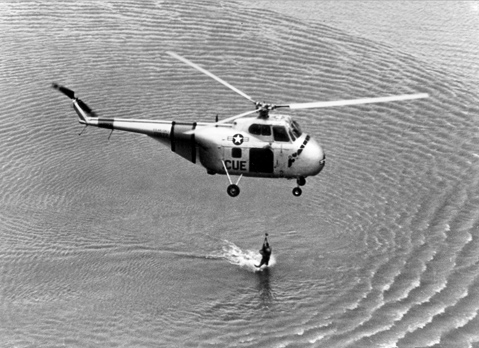Review: RESCUE at UCSB’s Red Barn
Artists from Rotterdam Invade University Project Space through March 11

For RESCUE, five artists based in Rotterdam, the Netherlands — Sol Archer, Julien Grossmann, Niki van Strien, Joshua Thies, and Lorelinde Verhees — came together for a group show in the Red Barn, an anachronistic little building tucked behind the serious institutional architecture that lines the UCSB campus’s main drag. Organized by Department of Art faculty member Alice Wang and curated by Thies, RESCUE zips by like a loaded ambulance with only a 15-day run. The spirit of international collaboration and rapid adaptation that has animated contemporary art for centuries was fully revived through this brainy yet aesthetically rich overview of new art in Rotterdam.
Joshua Thies was raised in Solvang and earned his BFA in sculpture at San Francisco Art Institute before moving to Rotterdam, where he received an MFA from the Piet Zwart Institute (PZI). Named after the pioneering Dutch designer, the PZI has been dedicated to interdisciplinary and collaborative work from its inception, and today it offers one of the world’s most consistently innovative educations in art.
Thies has two pieces in RESCUE, “these fields,” a video work from 2014, and “Mastering Gaze,” a series of six photos also completed last year. The video begins with aerial footage captured from Google Earth that is set to field audio recorded at two abandoned soccer fields on the outskirts of Rotterdam. The imagery is remarkably engaging considering its source. (I’m still not sure how Thies achieves such intricate camera work using Google.) Just when you think it won’t change, it does, cutting from the aerial views to a rapid-fire montage of women high jumpers. Oh, and there’s whispering, too, along with humorously cryptic supertitles throughout. According to the artist’s statement, the whispering and other vocalizations were added to “bolster the value of intimacy” through encouraging autonomous sensory meridian response, which is a fancy scientific term for that tingling sensation you sometimes get on your scalp or down the back of your neck.
Clearly Thies does not take a traditional approach to making art, even when considered from the perspective of the relatively lawless realm of multimedia. The photos in “Mastering Gaze,” which were taken from the air on the flight from Amsterdam to Los Angeles, help orient the viewer to Thies’s central concerns, which are the sensation of oscillating between one place and another and the associated shift from seeing with a bird’s-eye view to seeing with one’s feet planted on solid ground.
Julien Grossmann also uses video, maps, technology, and even subliminal suggestion, but his work looks nothing like that of Thies. In his minimalist HD video “Marine Affairs,” a wrinkled rectangular fragment of ocean evolves over time to a soundtrack of voices reading the Marine Affairs Bibliography. It’s strangely beautiful and determinedly enigmatic. Grossmann’s offset print piece called “A Two Dimensional Geography of the Great Beyond,” on the other hand, is as readily legible as the center spread in an issue of National Geographic, which it resembles, albeit cheekily.
Strewn about the gallery were small objects collected, altered, and sited by Niki van Strien in a subtle intervention that neatly subverted the self-sufficiency of the other individual works. Sol Archer contributed the piece that came closest to addressing the RESCUE theme directly, a video called “Death Comes Home to Farm” that reflects on the 1962 crash of an experimental nuclear bomber into a farmhouse in Lincolnshire. And Lorelinde Verhees added a lovely, unexpected video based on abstract paintings called “study_1.” Congratulations to these young artists and to the organizers for bringing truly innovative and thought-provoking work to Santa Barbara, even if only for a fleeting visit.



